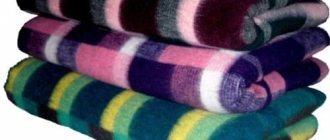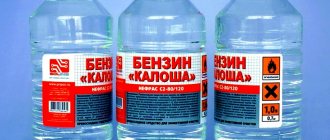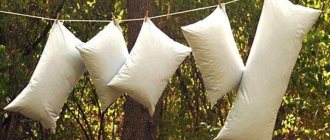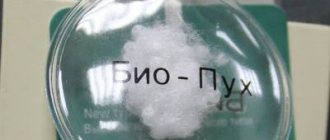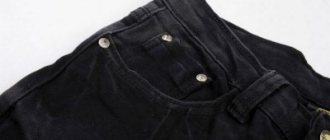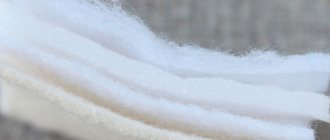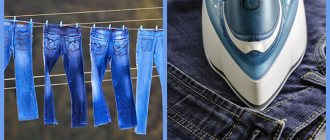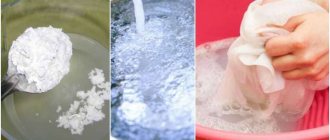A blanket keeps a sleeping person warm on cold nights, but a comfortable and healthy sleep is only possible if it is clean and fresh.
Dirty and foul-smelling bedding does not provide a pleasant experience.
Read the article about how to wash a blanket in an automatic washing machine and manually, whether you need to wash a new one after purchase, which detergents to choose and how to properly care for products made from different types of fabric.
Is it washable?
The blanket can be washed by hand and in a machine. The choice of how to care for it depends on a number of factors.
Machine washing is not permitted in the following cases:
The bedding is made of fabric that does not tolerate automatic processing. For example, products made from sheep or camel wool are not loaded into the drum.- The blanket is too big. When wet, its weight increases, which can lead to equipment failure.
- The product is old, its upholstery is thin or has some damage. During the machine washing process, the item may completely deteriorate.
To understand whether a blanket can be washed in a machine, you need to read the information provided by the manufacturer on the label. His recommendations should not be violated.
If a correctly folded blanket takes up more than 2/3 of the drum, then it is better to refuse washing. It will not be possible to properly clean and rinse it.
Signs permitting and prohibiting processing
You can understand whether a blanket can be machine washed by studying the icons indicated on the product label. Sometimes care instructions can be found on the packaging. Therefore, you should not rush to throw it away.
Explanation of the main symbols:
- Hand wash only - icon of a basin with a hand in it.
- Any washing is prohibited - a crossed out icon of a basin with water.
- White circle – dry cleaning or dry cleaning.
- Washing machine icon - automatic washing and spinning possible.
- Crossed out washing machine icon—automatic drying and spinning are prohibited, but washing is possible.
The numbers indicated inside the icons indicate the maximum washing temperature of the product.
If the item is of high quality, and the manufacturer cares about its reputation, then in addition to the icons, you can see text on the label that specifies the information encoded in the form of icons.
Silk and down duvet
It is not recommended to machine wash silk items; natural fibers are best cared for by dry cleaning
Typically, the manufacturer recommends using dry cleaning services. This is correct - the material is capricious, so whenever possible, have it cleaned by professionals. This won’t hurt your wallet too much, since it’s enough to wash down products once a year, and you can get rid of stains with a brush and soapy water. If you still decide to wash your blanket at home, follow the following instructions.
- Wash it on delicate or down cycle at 30 degrees. With double rinse and spin at maximum speed.
It is better to choose a delicate or “Hand wash” mode with a minimum number of revolutions
- Use a special detergent.
- Place tennis balls or special rubber balls into the drum.
Place the blanket in the drum along with two to three tennis balls
- Dry the blanket on a horizontal surface with an absorbent cloth underneath it. Shake and straighten the stuffing regularly and turn the blanket over.
- Hand wash as you would all blankets - soak, rinse well and wring out. The main thing is proper drying.
A duvet can be washed in a machine if there are no prohibiting instructions on the label, the size of the duvet corresponds to the capabilities of the machine and the fabric of the cover is not prone to shedding
This is interesting: How to wash a jacket in a washing machine: is it possible, means
The best means
In order for the product to wash well, you need to use the right detergent . The only recommendation is to choose a liquid powder or gel.
This form of release is good because the composition dissolves quickly, copes better with dirt, is activated in cool water and rinses well.
Bulk powders are not prohibited from use, but in this case you will have to rinse the item at least 2-3 times.
Most liquid concentrates are universal , that is, they are suitable for caring for ordinary and delicate fabrics, including natural wool and silk.
You definitely need to pay attention to the composition. It should not contain aggressive components such as chlorine bleach or acids.
When washing duvets, it is recommended to use detergents containing lanolin. They prevent the formation of lumps, so the filler does not get lost.
Top 3
The range of liquid detergents is varied. When choosing, you need to focus on their price and features of use:
Washing gel “Weasel wool and silk” . This product is suitable for caring for blankets made of synthetic and natural fibers. It starts working at a temperature of 30 degrees. The harder the water, the greater the consumption of detergent. For 1 liter of gel you will need to pay about 250 rubles.- Universal washing gel “Synergetic” . The concentrate can be used to care for any products: cotton, synthetics, silk and natural wool. It is suitable for hand and machine washing, does not contain aggressive components, is dosed sparingly, and is used to care for children's bedding. The cost of 1 liter of gel is about 210 rubles.
- Persil freshness washing gel from Vernel . It contains a stain remover, so it is suitable for washing light and white fabrics. The cost of a 1.95 liter package is about 450 rubles.
Do not exceed the dosage of detergent. This will not improve the quality of washing, but will only make it more difficult to rinse foam from fabrics.
Preparation for the procedure
Before you start washing, you need to properly prepare your bedding.
It is recommended to do the following:
- Remove the item from the duvet cover.
- Eliminate all existing defects in the product. If there are any loose seams or holes, they need to be sewn up.
- Remove dust from the blanket. It can be knocked out, shaken out or vacuumed.
- Wash difficult stains in advance. To do this, use laundry soap, which is foamed and applied locally to the contaminated area.
- Fold the blanket correctly. It is folded several times, rolled into a roll and placed in the drum of the washing machine around the perimeter.
Wet cleaning of cotton and silk blankets - instructions
Such bedspreads cannot be washed either in a machine or by hand. If the filler gets wet, it will immediately break down, and it will be impossible to return the bedspread to its original appearance.
Therefore, cotton should be cleaned as follows:
- If possible, hang the blanket outside. Carefully but gently knock it out and leave it to air for a while. If this is not possible, just give the product a good vacuum cleaner. If you do not clean it in advance, the accumulated dust will turn into dirt when it comes into contact with water.
- Grate the laundry soap and dissolve it in water. Then whisk the water until a thick foam forms.
- Apply foam using a brush and clean contaminated areas.
- Wipe off the foam with a washcloth washed in clean water and wrung dry.
As for silk products , it is enough to wipe them occasionally with a solution of water and ammonia, or water and alcohol . Simply soak a cotton swab in the resulting solution, squeeze it well and thoroughly wipe the contaminated areas. Then wipe the product again with a clean and well-wrung-out sponge.
How to wash in an automatic washing machine: at what mode, temperature?
When starting to machine wash, you need to take into account the peculiarities of caring for a particular product. The uniform instructions for use require the following steps:
Place the prepared product in the washing machine.- Pour liquid detergent into the compartment.
- Set washing parameters. The maximum water temperature depends on the material from which the blanket is made. Most often, this figure should not exceed 40-60 degrees. In the case of delicate fabrics and fillers (bamboo, wool, silk) they are limited to 30 degrees.
- If spinning is allowed, then it is better to set the speed to 600-700 rpm.
- When washing with powdered detergents, be sure to turn on the “extra rinse” function.
- Start the wash and wait until it finishes.
Do not leave a wet blanket in the washing machine drum after the end of the cycle. The longer it is crumpled, the higher the likelihood that the filler will get knocked down.
Prevention
The choice of how to restore cleanliness and freshness to a blanket depends on the material from which it is made and the degree of its contamination. To keep it always clean without dust accumulations quite regularly:
- Carry out dry cleaning 1-2 times a year and thoroughly ventilate it in the fresh air;
- you can periodically treat the blanket with hot steam (if the temperature indicated on the label allows it) using a household steam generator;
- It is very useful to take the blanket out into the cold in winter for several hours.
If you follow these simple rules, you won’t often have to resort to more radical washing methods. These procedures will help keep the blanket clean and reduce the risk of allergic diseases.
If the blanket is too large or has a high degree of soiling that cannot be removed at home, the wisest thing to do is to have the blanket dry cleaned.
To increase its service life, you need to select a blanket that is ideal for each season and room temperature. The material from which the blanket is made should be selected taking into account the individual characteristics of its potential owner.
Wash by hand
Washing a blanket by hand is difficult, but this method of processing is the most gentle. Features of the procedure:
- Wash difficult stains separately. To do this, use laundry soap.
- Fill the bathtub with warm, but not hot water (not higher than 40 degrees).
- Dissolve detergent in it.
- Immerse the blanket in water and leave for 1-2 hours. Every 15-20 minutes you need to approach it and press it with your hands. You can turn the item over and wrinkle it slightly.
- Drain dirty water.
- Rinse the product until no more foam is washed out of it.
- Do not twist or wrinkle the item; leave it in the bathroom until most of the water has drained from it.
- Gently wring out the fabric with your hands and send to dry.
If the fabric allows, you can rub it with a soft-bristled brush or use a sponge.
What's special about padding polyester?
A synthetic blanket is the spirit of the times, a kind of innovation of technological progress in a budget version. The material is not particularly capricious, can easily be washed, does not like hot water, when housewives soak it in cold liquid, there is no change in quality.
You can wash it in a machine if the size of the drum allows it. It should be taken into account that the load on the washing machine will increase significantly from wet padding polyester laundry.
Washing conditions:
- Do not heat the water more than 40 degrees;
- The powder is suitable for ordinary ones, suitable for automatic machines;
- rinse twice, spin is set to intensive mode;
- Place to dry in any position after thorough shaking.
Monitor the drying procedure constantly and turn it over to the other side in a timely manner.
Features for different materials
Depending on the type of fabric from which the blanket is made, the features of caring for the product will differ. This factor affects all parameters:
- on the washing temperature,
- spin speed,
- choice of detergent.
Silk
Silk products are extremely finicky to care for. Therefore, if possible, they are sent to dry cleaning.
At home, you can resort to machine or hand washing, taking into account the following recommendations:
- water temperature no higher than 30 degrees;
- detergent – liquid only;
- refusal of bleaches and stain removers;
- spinning is not recommended (both manual and automatic).
The more carefully you handle silk fabric, the longer it will serve its owner.
Holofiber
Hollofiber is a synthetic fiber that is not difficult to care for. It can be washed both by hand and in a machine.
Basic recommendations:
- water temperature – no higher than 60 degrees;
- spin speed – up to 500 rpm;
- liquid detergent.
To remove stubborn stains, you can use a non-aggressive stain remover.
Baykovoe
The flannelette blanket can be washed in a machine or by hand. If the composition contains wool thread, then only liquid detergents can be used. Difficult stains are removed with laundry soap.
Flannelette bedding is often used in cribs, so laundry products should not contain aggressive components, fragrances or high concentrations of surfactants . The maximum water temperature is 40 degrees.
Read more about how to care for a flannelette blanket here.
Cotton
A cotton blanket is very heavy, and when wet, its weight increases 5 times. However, it needs regular maintenance, as the filler quickly absorbs foreign odors, dust and other contaminants.
If the product is small, then you can limit yourself to hand washing, using only liquid detergent . The water temperature should not exceed 40 degrees.
When the blanket is of impressive size, it is taken to the dry cleaner. You won't be able to cope on your own.
Read more about how to care for a cotton blanket here.
Bamboo
With proper care, a bamboo blanket retains its shape for a long time and does not crumple. Wash it only with liquid powder.
Machine washing is not prohibited, but the water temperature should not exceed 40 degrees . Bamboo fiber is not afraid of high spin speeds (up to 800 rpm).
However, it is not recommended to keep such a product in water for too long. Therefore, the total washing time should not exceed 60-80 minutes.
Read more about how to care for a bamboo blanket here.
Down
The duvet can be washed either by machine or by hand. To care for it, use only liquid detergent . It is recommended to reduce its amount by 2 times to avoid excessive foaming.
The water temperature should not exceed 50-60 degrees. This treatment is used once a year to destroy dust mites.
The rest of the time it should not exceed 30 degrees. Be sure to turn on the extra rinse function.
Read more about how to care for your duvet here.
Sintepon
The synthetic blanket is light and warm. It is easy to care for and can be washed in a machine or by hand. The main condition is not to exceed the water temperature of 40 degrees .
Products made from padding polyester are resistant to aggressive detergents in the form of chlorine. Difficult stains are removed with laundry soap. To improve the quality of hand washing, use a brush with soft bristles.
The product can be pressed at high speeds (up to 800 rpm) . Prolonged soaking is acceptable.
Read more about how to care for a padding polyester blanket here.
Woolen
A wool blanket is light, environmentally friendly and hypoallergenic, but its significant disadvantage is its high care requirements. It is not recommended to machine wash it.
If such a procedure cannot be avoided, then you need to select the appropriate program (“Wool”, “Delicate wash”) . If you are not sure that the procedure will take place without harm to the product, it is better to use dry cleaning services.
When washing by hand, it is unacceptable to exceed the water temperature of 30 degrees. The product is not wrung out or twisted.
Read about how to wash a wool blanket here.
Made from camel hair
Manufacturers of camel wool products recommend not to machine wash them. It is cared for manually.
The detergent must be liquid . There are specialized formulations on sale designed specifically for woolen fabrics.
Soaking should not exceed 30 minutes, and the total washing time of the product should be 1 hour. You need to rinse the item thoroughly so that there are no gel particles left in it that will destroy the natural fiber.
Read more about how to care for a camel wool blanket here.
From sheep
When caring for a blanket made of sheep wool, you need to take into account the features of its manufacture .
Quilted items can be washed in a machine using the “Wool” program, whole woven items can only be washed by hand, and fur items must be dry cleaned exclusively.
The water temperature should not exceed 30 degrees. Do not subject the bedding to an automatic spin cycle or twist it manually.
Read about how to wash a sheep's wool blanket here.
What kind of wool is used
Blankets and rugs made of pure wool give a feeling of warmth, comfort, and have healing properties. Therefore, products made from this material do not go out of fashion. They are produced in 2 types: lightweight models for the off-season and a winter version.
camel
Products made from camel wool are antistatic and do not collect dust. They are light, compact, and retain heat well. They produce 2 versions of blankets:
- resembling a blanket (made of fluff);
- with fabric covering, filled with wool (quilted, karo-steppe, cassette).
With proper care, the products last for 20-30 years, after washing they retain their original shape, and rarely cause allergies.
Sheep
The most blankets are made from sheep's wool. They have pros and cons that are evaluated when choosing.
| pros | Minuses |
| Provides optimal temperature for sleep | Ticks are starting to appear |
| Does not accumulate static electricity | May cause allergies |
| Hygroscopic, this is convenient for those who suffer from excessive sweating | Caking |
| Breathable | Heavy |
Sheep wool blankets last 10-15 years. They cannot be machine washed. This makes care more difficult.
Merino and alpaca
Merino is a breed of sheep. They have long, very fine wool with special characteristics:
- light;
- does not absorb moisture;
- soft;
- conducts air well;
- has bactericidal properties.
Alpacas are animals from the Camelidae family. Their habitat is the highlands of South America. The fur of these animals is delicate, long, thin, and hollow inside. Blankets are woven from it. They are much warmer than products made from merino wool. Indicated for people with joint diseases, osteochondrosis, and circulatory pathologies. The blankets are hypoallergenic and get dirty a little. The only downside is the high price.
baby blanket
When washing a baby blanket, take into account the following recommendations:
Care should be regular (at least once every 1-1.5 months). It is carried out as needed.- You should only use specialized detergents, for example, “Eared Nanny” washing gel.
- To remove local contaminants, use laundry soap. The use of aggressive components is unacceptable.
- After washing, the item must be ironed, unless the manufacturer prohibits it.
To soften the fabric, you can use a hypoallergenic fabric softener, for example, Lenor Children's.
Does the new one need to be cleaned?
A new blanket should be washed immediately after purchase. It is not recommended to use it without pre-treatment . Before the item reaches its owner, it passes through many hands.
The first wash allows you to get rid of the accumulation of dust and bacteria, remove excess dyes, and get rid of the chemical smell. It is not necessary to use detergents.
You can run an express wash, which will not exceed 15-30 minutes in time, but the water temperature should be the maximum permissible for a particular type of fabric.
Special filler requires special care
A silk blanket requires serious consideration. If one stain appears, try to clean the surface without mechanical treatment.
When there is no other way out, the laundry smells unpleasant, it is necessary:
- wash in a washing machine; do not use old-style washing machines, they will damage the fabric surface;
- set a mode for silk items;
- Do not raise the temperature above 30 degrees;
- choose preparations for delicate materials;
- press at low speed;
- rinse several times;
- Drying should be done in the machine itself.
Blankets of any kind, expensive and cheap, will last a long time under the only condition that the owner treats his property with care and washes it correctly. The instructions included with the purchase will always help you navigate everyday issues.
How to deal with a large product?
Washing a large blanket in a machine is problematic. The drum load must be at least 6-8 kg. Otherwise, the item simply does not stretch, and the remaining detergent will destroy the fabric fibers. Therefore, oversized bedding is most often sent to dry cleaning .
Hand washing is only possible in the bathroom. However, you will have to rinse such a product for a long time, changing the water 5-7 times. To wring it out and send it to dry, you will need the help of your household. It's difficult to cope alone.
Periodicity
You need to wash the blanket as it gets dirty. If the stains are minor, then it is enough to limit yourself to local cleaning.
General recommendations for washing frequency:
- wool products – once every 6 months;
- synthetic and cotton blankets – once a year;
- down products – once every 4-6 months.
The duvet cover needs to be treated at least once every 7-10 days. Otherwise, the blanket itself will quickly get dirty. You need to knock dust out of it once a week, every time you change the cover.
Drying
You need to dry the blanket in the fresh air or in a well-ventilated area.
Basic recommendations:
- Only blankets without filling can be hung.
- Cotton or down products are dried on a flat surface. They need to be shaken periodically.
- Do not try to speed up the drying process using heating devices or heaters.
Regardless of the type of fabric, it must be protected from direct sunlight. Only completely dried items are placed in the duvet cover.
Useful tips
Tips for caring for your blanket:
To prevent the filler from clumping, you can place several tennis balls in the washing machine drum.- Bleach can only be used to wash a white blanket, provided that its use is not prohibited by the manufacturer.
- To improve the quality of washing, you can use fabric softener.
- To get rid of dust, the blanket needs to be vacuumed once a month.
Read about how to wash other bedding here.
What to do if there are problems - if the filling has rolled up, the blanket has become hard, or an odor has appeared
After improper washing and drying, you can encounter many unpleasant consequences. It is necessary to rewash the product only as a last resort, if the methods from the list below did not help.
How to clean a mattress on a bed at home - secrets of advanced housewives
Here are some common problems and how to solve them:
- Lumps have formed . If simple kneading and shaking does not help, use a vacuum cleaner. You can also try beating with a carpet beating tool.
- Unpleasant smell . To eliminate it, let the product lie outside for some time. Ideal if the weather is windy.
- The material has become hard . In this case, you will have to wash it, but this time be sure to use a good fabric softener.
Most duvet fillers can easily be washed in an automatic machine if done correctly and not too often. For surface stains, it is better to use dry cleaning, so the blanket will last longer.
Don't forget that drying is as important a part of the process as washing itself. A poorly dried product will have to be washed again.
